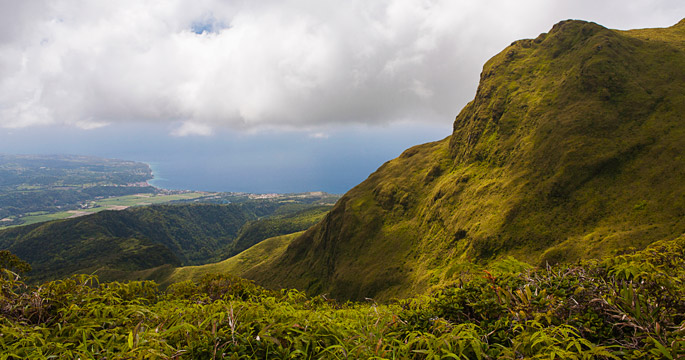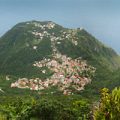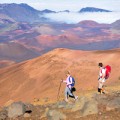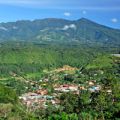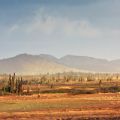Taming the Volcano is challenging, but safe
There’s a slumbering giant on the island of Martinique, and you can climb its shoulders. It’s been nearly a century since Mount Pelee erupted in volcanic fury, covering the city of St. Pierre in a cloud of toxic ash that killed more than 30,000. Things are much quieter these days save for a few historic ruins. Little evidence of this tragedy remains, and hiking the green slopes of the volcano is a popular activity.
Rising to nearly 4,600 feet above sea level, Mount Pelée is one of the highest peaks in the Antilles. There are several paths that lead to the summit, the most popular being the trail along the Aileron Ridge. This route begins at the village of Le Morne-Rouge on the eastern side of the volcano, and follows its namesake ridge upward to circumnavigate the crater rim, drop into the fern forest of the inner caldera, then summit the steep inner cone. The upper slopes of Mount Pelée are frequently covered in clouds, but even on days when there are no grand panoramic views of island and ocean, the scenery is worth the climb.
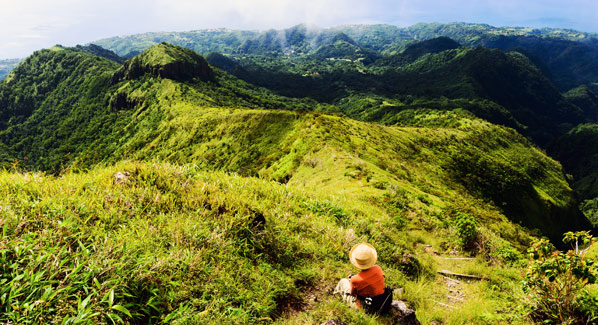
From a vantage point near the crest of the Mount Pelée crater rim, a hiker takes in a view of the Aileron Ridge. The climb from sea level is challenging but achievable. Photo: Richard Christophe/iStock
For a sunnier, shorter and steeper path to the top, hikers can approach from the west on the Grande Savane trail. Adventurous trekkers seeking the path less trodden will sometimes opt for a third route that follows a trail known as the Morne Macouba up the northern face of the volcano.
All three trails join near the summit. The summit often takes three to four hours, so plan for a full day to get there and back. Each trail includes some steep and at times muddy terrain, making hiking boots the best choice for footwear. It’s advisable to carry plenty of water and snacks, plus exposure protection for both rain and shine. Depending on Pelée’s mood, you could be hiking in the mist or under the hot Caribbean sun. It’s possible to make the climb on your own, but many hikers sign up for a guided trek, which can be arranged though a number of tour operators and hotel desks.

